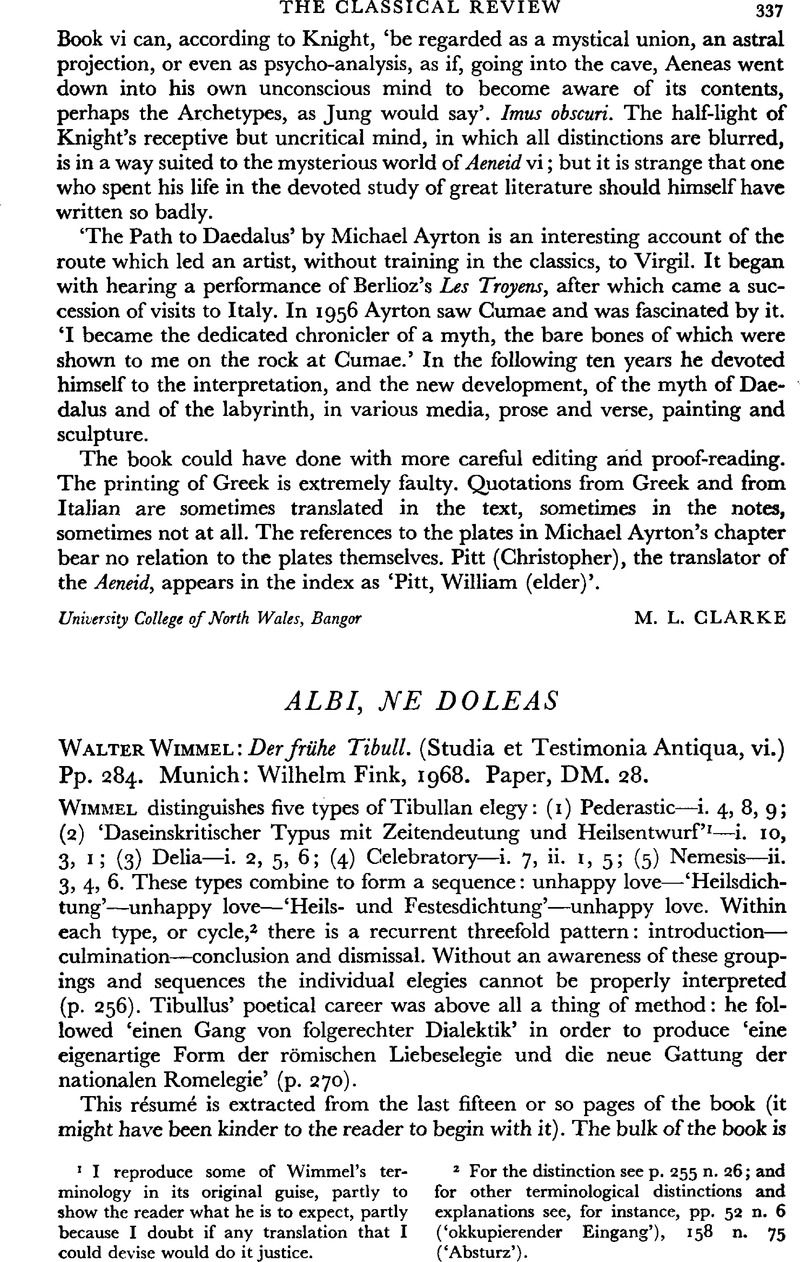Published online by Cambridge University Press: 27 February 2009

page 337 note 1 I reproduce some of Wimmel's terminology in its original guise, partly to show the reader what he is to expect, partly because I doubt if any translation that I could devise would do it justice.
page 337 note 2 For the distinction see p. 255 n. 26; and for other terminological distinctions and explanations see, for instance, pp. 52 n. 6 (‘okkupierender Eingang’), 158 n. 75 (‘Absturz’).
page 338 note 1 See, most recently, Williams, G. W., Tradition and Originality in Roman Poetry pp. 499–5OO.Google Scholar
page 339 note 1 For the type of fallacy inherent in this approach see now Garvie, A. F., Aeschylus' Supplices: Play and Trilogy (1969), pp. 88–140.Google Scholar
page 339 note 2 Cf. Williams, op. cit. 551 ff.
page 339 note 3 Wimmel observes of the Eclogues apropos of the sequence 5, 9, 1, 4, that ‘in solchen Fällen wird die Reihenfolge ein Hauptgegenstand der Interpretation’ (p. 89). Even when Virgil arranged the poems in a different order?
page 339 note 4 On i. 10. 39 there is a reference to ‘Beispiele von kurzem hic bei Smith im Komm.’ (p. 139 n. 43). What Smith thought in 1913 is neither here nor there; in 1968 Wimmel should know that hic (pron.) is always ‘short’; it is its metrical quantity that varies (Allen, W. S., Vox Latina [1965], 75–77Google Scholar).
page 339 note 5 Compare p. 91 n. 18, where i. 9. 16 and 10 are called ‘auffallend ähnlich’.